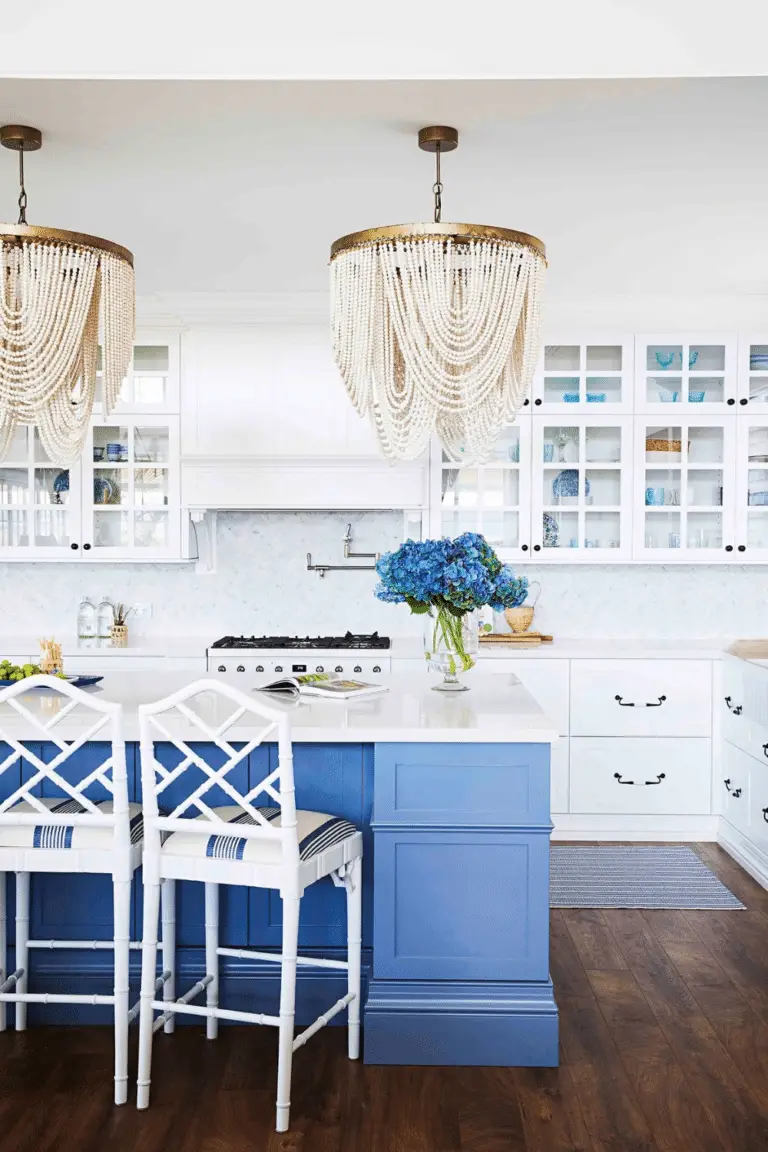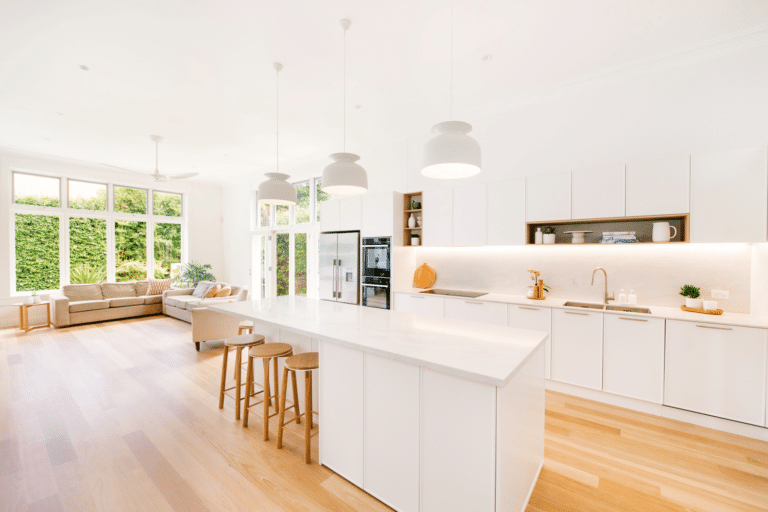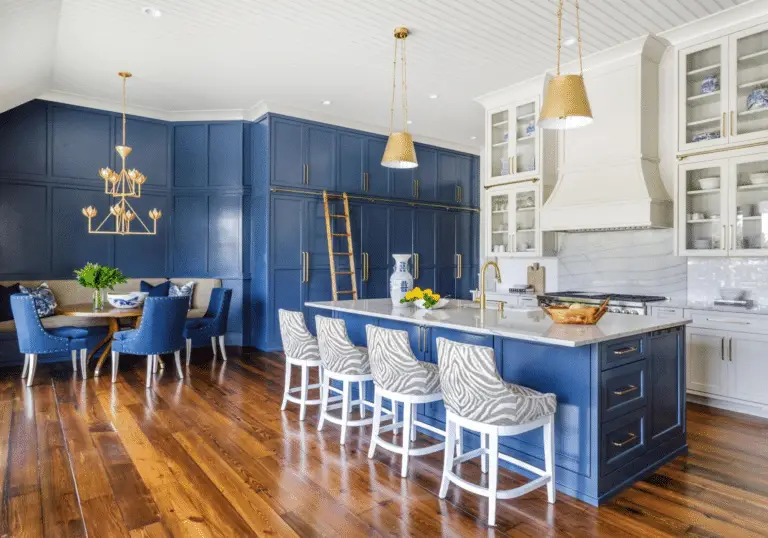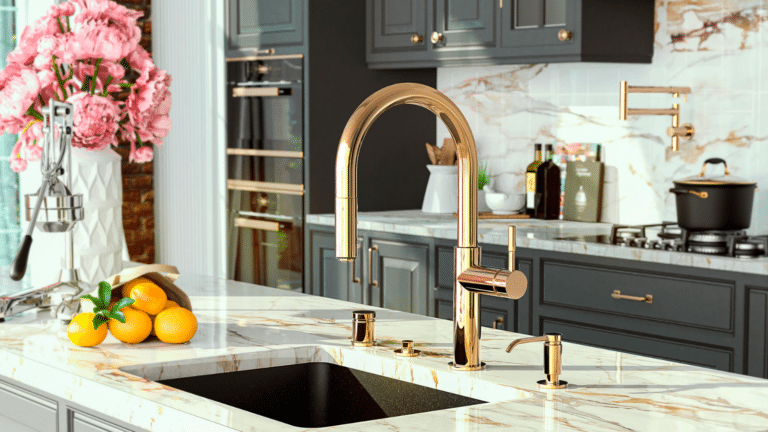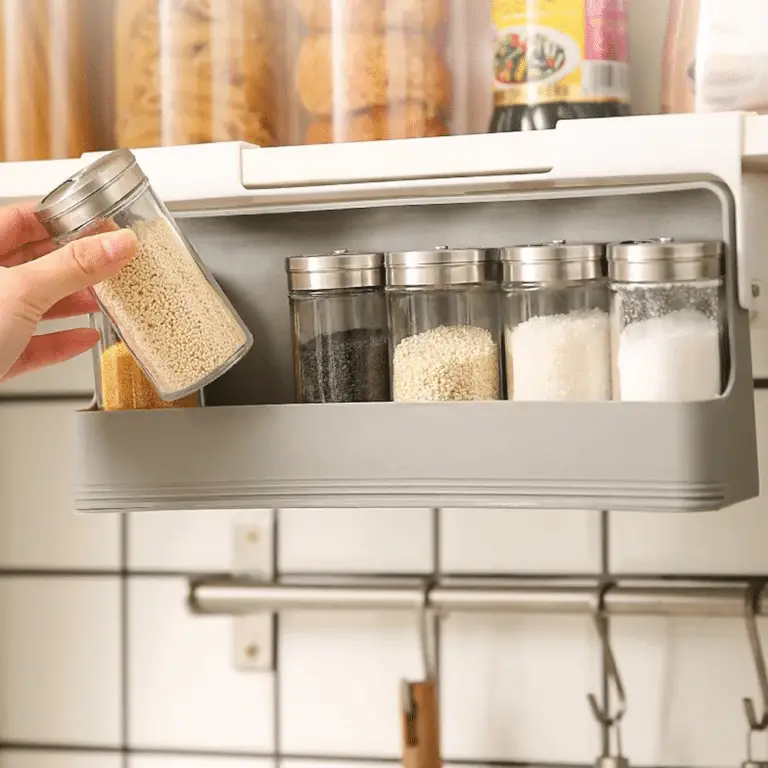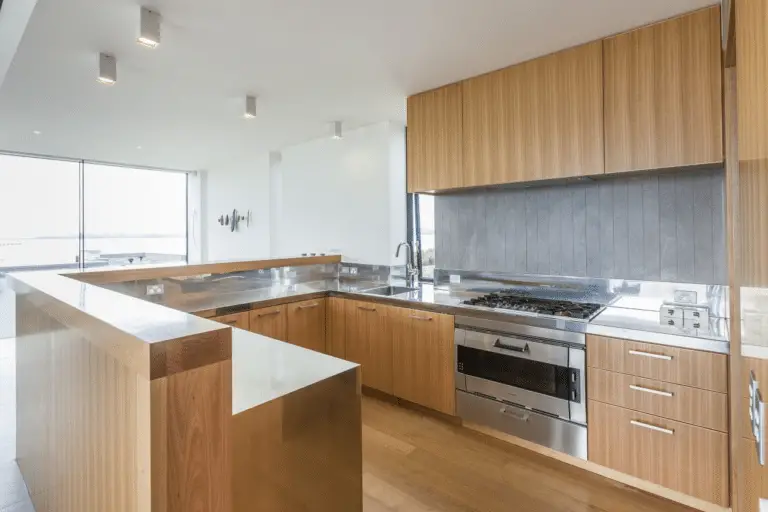Welcome to our blog post all about Types of Molding for Kitchen Islands! Molding may seem like a small detail, but it can make a big impact on the aesthetic of your kitchen island. From crown to baseboard to rope moldings, each type offers a unique style to enhance your space.
Learn about different materials like wood, MDF, and polyurethane, and get tips on choosing the right molding for your design. Stay tuned for installation and maintenance advice to keep your kitchen island looking fabulous!
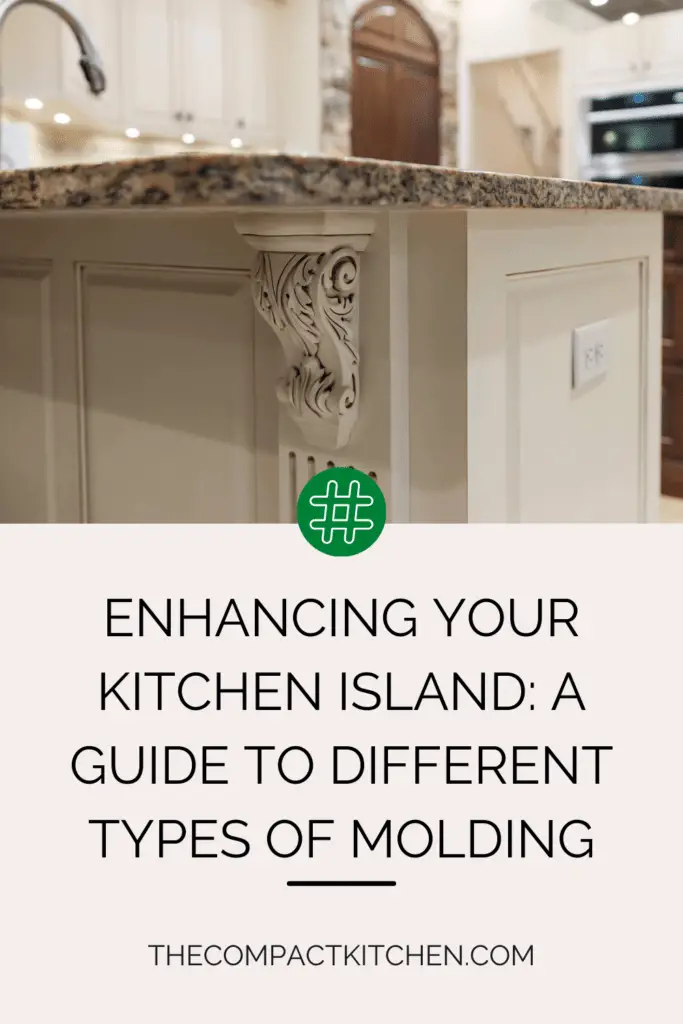
Introduction to Molding for Kitchen Islands
When it comes to designing a kitchen, every detail matters – including the molding. Molding plays a crucial role in adding character and charm to kitchen islands. It serves as the finishing touch that ties together the entire look of the space. In this section, we will explore the significance of molding for kitchen islands and how it can enhance the overall aesthetic appeal.

Imagine your kitchen island as a blank canvas waiting to be transformed into a work of art. Molding is the artist’s brush that adds depth, dimension, and visual interest to this focal point in your kitchen. By incorporating various types of molding, you can create a unique and customized look that reflects your personal style.
From sleek and modern to classic and ornate, molding offers endless possibilities for customizing your kitchen island. By choosing the right molding style and material, you can elevate the design of your kitchen and make a lasting impression.
Key Takeaways:
- Molding is an essential element in kitchen design, enhancing the aesthetic appeal of kitchen islands.
- It serves as the finishing touch that adds character and charm to the overall look of the space.
- Choosing the right molding can help create a unique and customized design that reflects your personal style.
Common Types of Molding for Kitchen Islands

When it comes to adding the finishing touch to your kitchen island, molding plays a significant role in enhancing its overall aesthetic appeal. There are several common types of molding that you can choose from, each offering a unique style and character to your kitchen island.
Crown Molding

Crown molding is a popular choice for kitchen islands as it adds a touch of elegance and sophistication to the overall design. Typically installed at the top of the cabinets or along the ceiling, crown molding creates a seamless transition between the cabinetry and the ceiling, giving your kitchen island a cohesive and polished look.
Available in a variety of styles and profiles, crown molding can be customized to complement your kitchen’s design aesthetic, whether it’s traditional, modern, or rustic. Its versatility makes it a versatile choice for any kitchen renovation project.
Baseboard Molding

Baseboard molding, also known as skirting board or floor molding, is another common type of molding used for kitchen islands. Installed along the bottom of the cabinets or at the base of the island, baseboard molding helps to conceal the joints between the floor and the cabinets, creating a seamless and finished look.
Similar to crown molding, baseboard molding comes in various styles and finishes to match your kitchen’s decor. Whether you prefer a sleek and minimalist design or a more ornate and decorative look, baseboard molding can be customized to suit your taste.
Rope Molding
Rope molding is a decorative type of molding that adds a touch of texture and visual interest to your kitchen island. Resembling twisted ropes, this type of molding is often used as an accent piece or decorative trim to enhance the overall design of the island.

Available in different sizes and patterns, rope molding can be used to create intricate designs and patterns on the surface of the island, adding a unique and stylish element to your kitchen. Whether you prefer a subtle touch of elegance or a bold statement piece, rope molding offers endless possibilities for customization.
Choosing the right type of molding for your kitchen island is essential to achieving the desired look and feel for your space. Consider the overall design aesthetic of your kitchen, the functionality of the island, and your budget constraints when selecting the perfect molding for your project.
Material Choices for Kitchen Island Molding
When it comes to adding molding to your kitchen island, the material you choose can make a big difference in both the look and durability of the finished product. There are several options available, each with its own set of pros and cons. Let’s take a closer look at the most common types of materials used for kitchen island molding.
Wood
Wood is a classic choice for molding and is often preferred for its natural look and feel. Hardwoods such as oak, maple, and cherry are popular choices for kitchen island molding due to their durability and ability to be stained or painted to match any kitchen design. Wood molding brings a warm and traditional touch to the kitchen and can be easily customized to suit your preferences.

However, it’s important to note that wood molding may require more maintenance than other materials, as it can be susceptible to moisture damage and warping over time. Regular refinishing and sealing may be necessary to keep wood molding looking its best.
MDF (Medium Density Fiberboard)
MDF is a more affordable alternative to wood molding that offers a smooth and consistent finish. It is made from resin-bonded wood fibers and is easy to work with, making it a popular choice for DIY projects. MDF molding can be painted to achieve a seamless look in any kitchen design and is resistant to warping and cracking.

While MDF is less prone to water damage than wood, it is not as durable and may not stand up as well to wear and tear over time. It’s important to handle MDF molding with care during installation to prevent chipping or damage.
Polyurethane
Polyurethane molding is a modern and versatile option that offers the look of wood molding without the maintenance. It is lightweight, easy to install, and comes in a wide range of styles and finishes. Polyurethane molding is resistant to moisture, insects, and rot, making it an ideal choice for kitchens with high humidity levels.

One of the major benefits of polyurethane molding is its durability, as it is less likely to warp, crack, or fade over time. It is also easy to clean and maintain, requiring only occasional dusting or wiping with a damp cloth.
When choosing the material for your kitchen island molding, consider the overall design of your kitchen, your budget, and the level of maintenance you are willing to dedicate to upkeep. Each material has its own unique qualities and characteristics that can enhance the aesthetic appeal of your kitchen island while providing lasting durability.
How to Choose the Right Molding for Your Kitchen Island
Choosing the right molding for your kitchen island is a crucial decision that can significantly impact the overall look and feel of your kitchen. With so many options available, it can be overwhelming to make the right choice. However, by considering a few key factors, you can ensure that the molding you select enhances your kitchen’s design while also meeting your practical needs.
Consider the Overall Design of Your Kitchen

When choosing molding for your kitchen island, it’s essential to consider the overall design style of your kitchen. If you have a traditional kitchen design, you may opt for classic crown molding to complement the timeless look. On the other hand, if your kitchen has a more modern aesthetic, sleek and minimalistic baseboard or rope molding may be more suitable. Matching the molding style to the overall design of your kitchen will help create a cohesive and harmonious space.
Think About the Functionality of Your Kitchen Island

In addition to aesthetics, it’s essential to consider the functionality of your kitchen island when choosing molding. For example, if your island serves primarily as a food preparation area, you may want to choose molding that is easy to clean and maintain. Alternatively, if your island includes seating for family and guests, you may prioritize comfortable and practical molding that can withstand daily use. Balancing the visual appeal with the practicality of the molding will ensure that your kitchen island remains both beautiful and functional.
Set a Realistic Budget
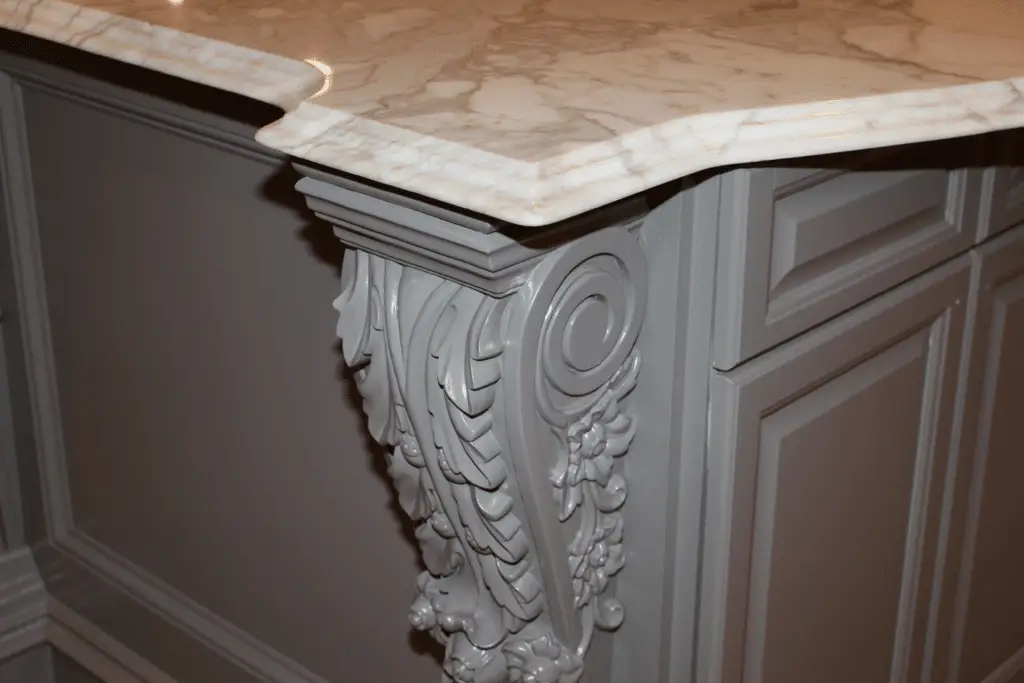
Another crucial factor to consider when choosing molding for your kitchen island is your budget. Molding materials can vary widely in price, with options ranging from affordable MDF to luxurious wood or polyurethane. By setting a realistic budget for your project, you can narrow down your options and focus on molding materials that not only look great but also fit within your financial constraints. Remember that investing in high-quality molding can add significant value to your kitchen and enhance its overall appeal.
Seek Professional Advice

If you’re unsure about which molding to choose for your kitchen island, don’t hesitate to seek professional advice. A knowledgeable designer or contractor can help guide you through the selection process, offering valuable insights into which molding styles and materials will work best for your specific needs. Additionally, they can provide expert installation services to ensure that your chosen molding is installed correctly and securely.
By carefully considering the design of your kitchen, the functionality of your island, your budget, and seeking professional advice when needed, you can choose the right molding for your kitchen island with confidence. Remember that the molding you select will not only enhance the visual appeal of your kitchen but also contribute to its overall functionality and longevity. Choose wisely, and enjoy the beauty and elegance that well-chosen molding can bring to your kitchen island.
Installation and Maintenance Tips for Kitchen Island Molding
When it comes to adding molding to your kitchen island, the installation process can seem daunting. But fear not! With the right tools and a bit of patience, you can transform the look of your kitchen island in no time. Let’s dive into some installation and maintenance tips to help you get started.
Installation Tips
Before you begin the installation process, make sure you have all the necessary tools and materials on hand. This includes measuring tape, a miter saw, wood glue, and finishing nails.

Start by measuring the length of the molding needed for each side of your kitchen island. Use a miter saw to cut the molding at a 45-degree angle to create seamless corners. Apply a small amount of wood glue to the back of the molding before attaching it to the island. Secure the molding in place with finishing nails, being careful not to split the wood.
For crown molding, remember that it should be installed at an angle where the bottom of the molding is flush with the ceiling. Baseboard molding should be installed at the base of the island to provide a polished finish. Rope molding, on the other hand, can be used to add intricate detail and texture to your island.
Maintenance Tips
Once your kitchen island molding is installed, it’s important to properly maintain it to ensure its longevity. Regular cleaning is key to keeping your molding looking its best. Use a damp cloth to wipe down the molding and remove any dust or grime.

For wood molding, you may want to consider applying a fresh coat of paint or stain every few years to maintain its appearance. This will also help protect the wood from wear and tear over time. For polyurethane or MDF molding, be sure to follow the manufacturer’s recommendations for cleaning and maintenance.
In addition to regular cleaning, it’s important to keep an eye out for any signs of damage or wear. If you notice any cracks, chips, or warping in the molding, it’s essential to address these issues promptly to prevent further damage.
By following these installation and maintenance tips, you can enhance the look of your kitchen island with beautiful molding that will stand the test of time. So grab your tools and get started on transforming your kitchen today!
Crowning Your Kitchen Island: Key Takeaways
When it comes to molding for kitchen islands, the options are endless. From crown to baseboard moldings, each type adds its unique touch to your kitchen. Consider the materials carefully for durability and aesthetics, and remember to balance style with practicality when selecting the right molding.
Lastly, ensure proper installation and maintenance to keep your kitchen island looking its best for years to come. So, get creative and let your kitchen island shine with the perfect molding choice!



